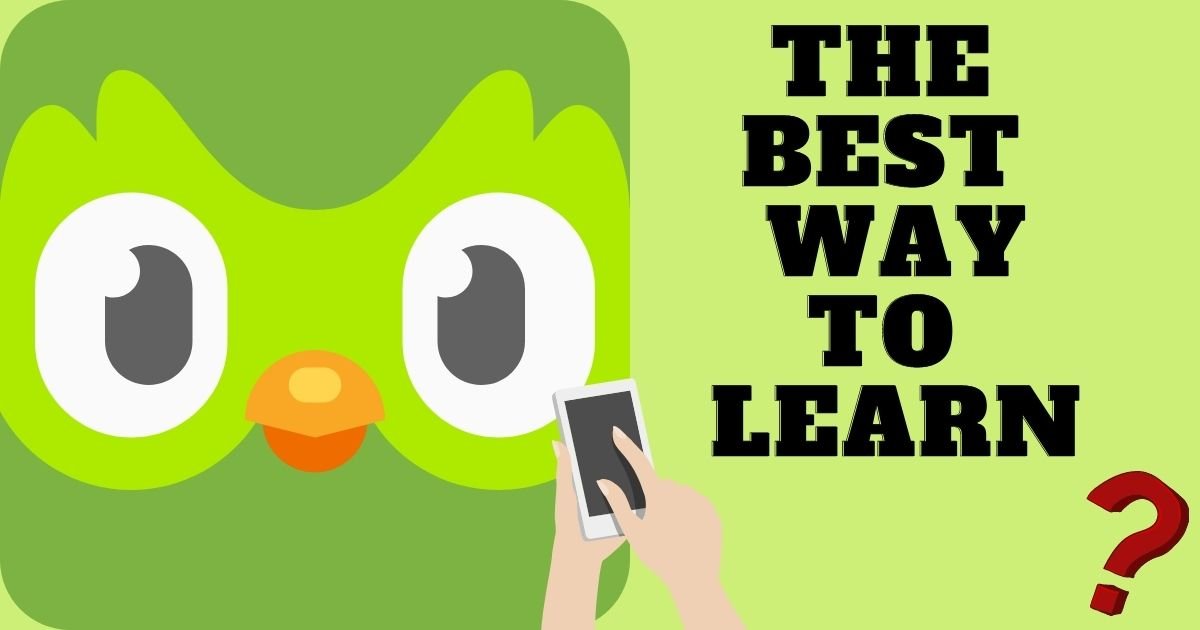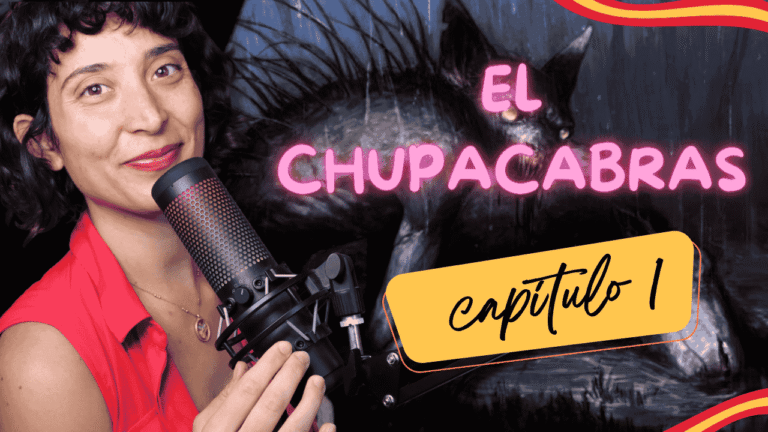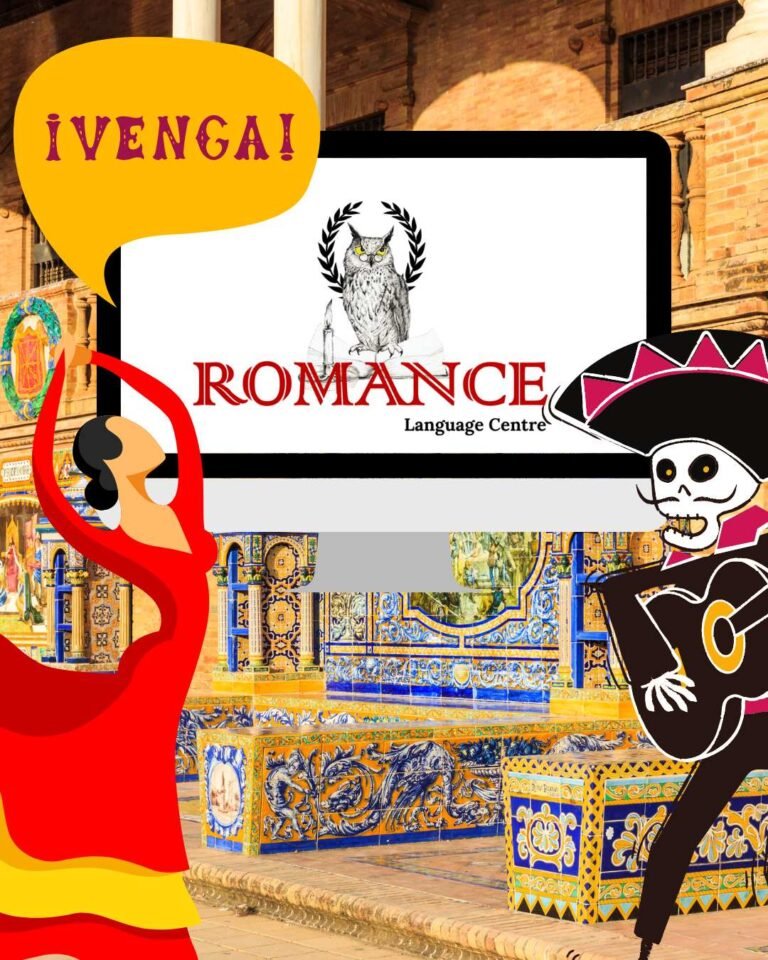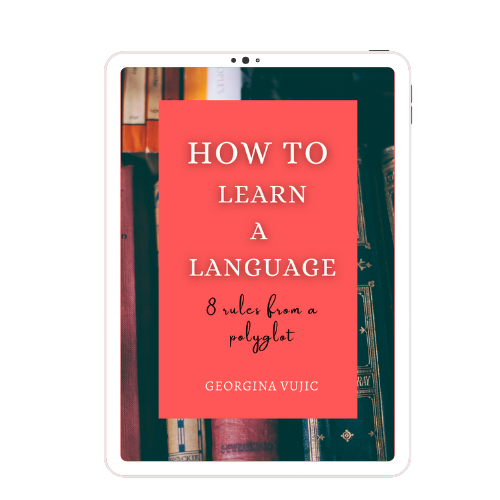It’s no secret that nowadays people are in more need of learning a language than ever before. Travel, work, or − pandemic, reasons are countless in the modern, ever-changing world.
Another thing that the vast majority of people have in common is that there simply isn’t that much money left at the end of the month for leisure activities. This, and the instant gratification culture, are the main reasons why, whenever we want to learn something new, we want to do that for free. And if possible, as quick as possible.
This is actually how Duolingo came to be in the first place. How many people do you personally know that are using this app to learn the desired language? Maybe you’ve even tried it yourself and are still unsure whether it really works or not?
In this post we’ll discuss whether Duolingo is the world’s best way to learn a language, as it claims to be. We’ll also see what happens when a Spanish language graduate gives Duolingo a go?
To begin, let’s dive first into the idea and the history behind Duolingo.
WHEN AND WHERE DID THE DUOLINGO OWL HATCH?
The idea for the language learning app first hatched in 2009 at the Carnegie Mellon University in Pittsburgh.
Luis von Ahn, whom you may know as the creator of the annoying ‘prove you’re human’ letters and numbers was the professor at the said University. He actually sold his company, reCAPTCHA, to Google in order to work on something related to education alongside his post-graduate student Severin Hacker.
Originally from Guatemala, Luis von Ahn saw first-hand how difficult it was to learn English for his paisanos and the difficulty of life actually drove him out of Guatemala, never to return. According to von Ahn, Duolingo was founded on the idea that free education would change the world.
Although this might have been true in the beginning, some of the founder’s statements later on will be diametrically opposite to what the app claims to be – the world’s greatest way to learn a language.
Officially, Duolingo has been around since 2012 and has grown since then massively. Currently, Duolingo is the most downloaded education app in the world, with over 500 million registered users and is only growing.
We could claim that Duolingo has fulfilled its initial goal and revolutionized language learning across the world − or at least helped it along the road it was already on.
So what makes Duolingo so successful? And is that a good thing?
Let’s look into how Duolingo operates and find out.
HOW DOES DUOLINGO WORK?
Even though I was familiar with the concept of Duolingo, its focus on translation and repetition, I decided to sign up for it in order to be able to bring you a thorough, first-hand review.
A little bit about me: I have a Master’s in Spanish and Ukrainian Language and Literature and years of experience as a lecturer, tutor and a private translator. All in all, I know quite a lot about what it takes to both learn and teach another language.
Having said that, I decided to go for a language that I don’t speak already to get the full learning experience, so I opted for Czech.
What follows is a break down of the essential aspects of Duolingo that make it the world’s best way to learn a language − or is it?

1. DAILY NOTIFICATION SYSTEM
Even if you’ve never used Duolingo, you’ve probably seen memes circling around with the Duolingo owl threatening you to continue with your lessons, or else… The meme has become known as the ‘Evil Duolingo Owl.’
What is more, the marketing team embraced it, making Duolingo even more popular. After all, there’s some truth to those memes: Duolingo really does send you daily reminders and pushes you to stay in whatever ‘league’ you’re in currently.
Whoever’s in the Duolingo team, knows human psychology well.
You might think to yourself: daily reminders? Sounds pushy and annoying.
However, Duolingo plays on the competitive nature of people − and it works. Which brings us to the next aspect of Duolingo.
2. THE GAMIFICATION ASPECT

The first thing I noticed about Duolingo is that it has an elaborate, flashy awards and points system going on. So much, in fact, that I found it hard to focus on language learning because I just felt overwhelmed trying to figure it all out.
Basically, the goal is not to lose your streak − how many days in a row you complete your lessons – although you can freeze your streak if you’ve collected the right points.
The problem with that system is obvious: all those experience points, achievements, trophies, hearts, gems and crowns don’t mean anything in real life.
You might have made the pushy Duolingo owl happy for the day, but the fact remains that you haven’t practiced the language of your choice that day. The consequences of that aren’t ‘frozen’ by fake internet points either.
3. AND FINALLY – LANGUAGE LEARNING
To begin with, Duolingo language learning is based on the immersion method. What that means is that it throws your right into the deep end, even if you have no previous knowledge of the language.
The goal is to complete lessons within a language tree. Lessons come with images and audio recordings. Some languages have ‘smart tips’ that explain grammar concepts and vocabulary usage when you make a mistake, which is actually useful. However, I didn’t have that for Czech specifically.

You start by hearing some basic words, you guess their meaning and then select one of the words offered.
You then proceed to formulate sentences based on the words listed below that you’d previously heard.
Sounds easy, right? It’s very easy to get a sense of accomplishment on Duolingo, which is no doubt another reason why people stay ‘hooked.’
However, even though you can hear the words pronounced, you’re not actually being taught the rules of pronunciation and the audio isn’t always the best quality either. And even though you repeat the same sentences and words over and over again, you’re doing just that − repetition without understanding doesn’t lead to the independent use of language.
So let’s take a better look at everything wrong with learning a language through Duolingo.
EVERYTHING WRONG WITH DUOLINGO
Now that we’ve seen some basics about how Duolingo works − daily reminders, awards and points system, repetition and translation, let’s talk about the problem with Duolingo methodology. And most importantly, we’ll answer − can you learn a language with Duolingo and to what level?

1. GAMIFICATION BEFORE LEARNING
Whether you go to Duolingo’s Facebook page or search for explanation on how Duolingo works on YouTube, most of the content and comments that you will see won’t be about actually learning a language − and this should be telling too.
Instead, most of the comments are about the game aspect of the app − how to win one of the many awards, why something isn’t working, accusations and questions whether other users are cheating because they couldn’t have made that much progress already and stolen their spot in the Diamond league, asking for more outfits for the Duolingo owl…the list goes on.
The simple truth is that Duolingo really is just a game for many users, that happens to involve languages. In favour of that statement goes the fact that Duolingo is most popular in United States and the UK − both countries that aren’t exactly known for their need nor their fervour for learning other languages.
In addition, those users who are genuinely interested in learning a language have picked up on this gamification aspect too. Hence learners report:
‘Duolingo has changed. I feel it is all about the most points in a league and not about learning anymore which to me is the most important thing.‘
‘A rat race to earn fake internet points.’
‘I think that the gamification is actually spoiling the learning. It is kind of addictive but really distracts from the main goal of learning the language.’
‘More concerned about making profit instead of teaching languages. The reason they added so much annoying gamification.’
At the end of the day, your progress in language learning shouldn’t be measured in arbitrary awarded points. Instead, it should be measured in real time spent actively learning with understanding, in re-visiting texts and audio content that you’d previously found challenging, but also in something Duolingo still can’t offer you despite all the upgrades − bespoke teachers’ feedback.
My overall impression as a professional language teacher and a language student myself was that Duolingo cheapens the process of language learning through excessive gamification.
2. DUOLINGO WON’T GIVE YOU LANGUAGE INDEPENDENCY
Apart from the ‘Evil Duolingo Owl’ very often you might see jokes at the expense of ridiculous sentences you get to translate in the app.
For example:
‘If you turn on the light, you’re going to wake up the bear who’s sleeping in the bed.’
You might think we’re going to dispute this use of translation activity; however, there’s actually nothing wrong with translating ridiculous sentences. The main goal of translation is to practice your understanding of sentence structure and vocabulary. And that means you should have no problem saying whatever it is you want to say − even if you want to say there’s a bear sleeping in the bed.
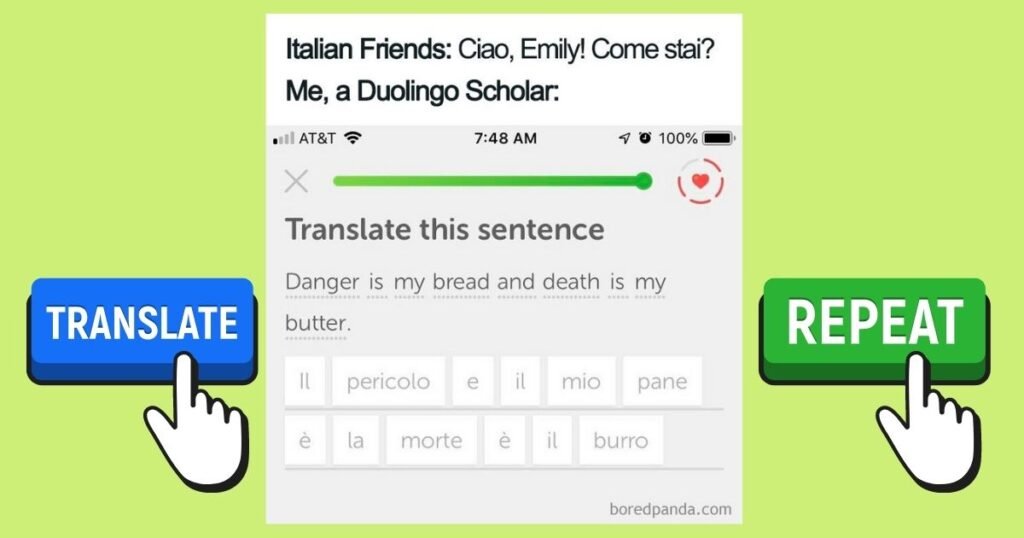
This, after all, indicates that you have reached fluency − that is, that you’re an independent user of a language, able to express pretty much everything you wish to say.
But this is exactly where Duolingo fails and why Duolingo not only isn’t the world’s best way to learn a language − but why it won’t teach you to use a language fluently at all.
Even with its ‘Smart tips’, Duolingo doesn’t teach you grammar systematically and methodically, and without that − repetition is utterly useless, because you’re not learning with understanding and you’re doomed to stiffly translated sentences that the app offers you.
This is why the users feel like many of the sentences are useless: they don’t think that they can apply them in real life. However, we shouldn’t have to rely on pre-written sentences at all, we should learn the rules with understanding and know how to apply them in new, different situations.
This need for a crutch stems from the fact that Duolingo hasn’t given its learners the tools necessary to form their own sentences − which, if you’re serious about learning a language, should be your ultimate goal.
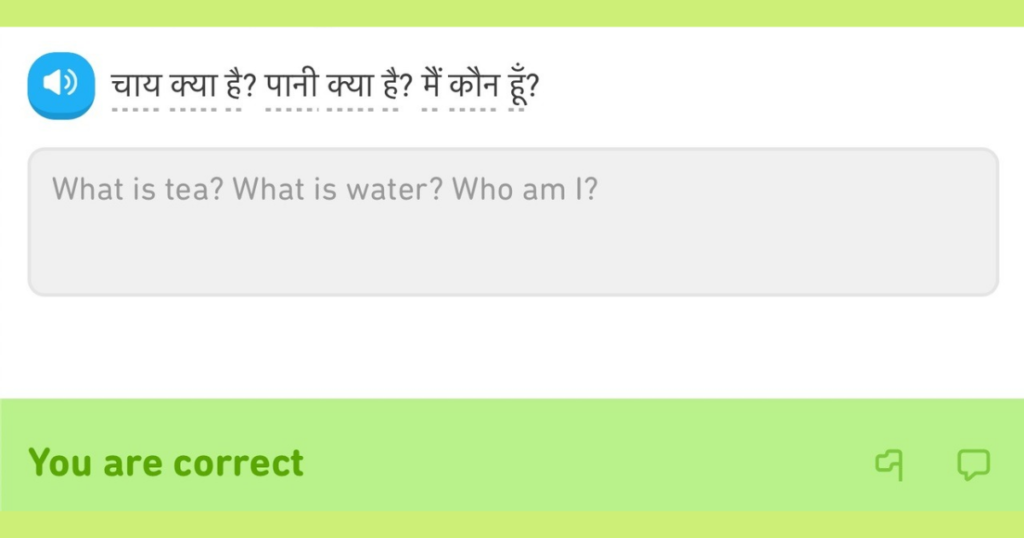
And that is how my misadventure with Duolingo Czech really ended − I learned some basic vocabulary like kluk (boy) and láska (love), but I’m none the wiser when it comes to the rules of pronunciation, grammar and actually being able to use the language independently, even at the most basic level. I also haven’t learned anything about culture, which brings us to the next point.
3. NO CULTURAL CONTEXT
As a whole, Duolingo is seen and advertised as this fun, engaging and effective way of learning a language.
However, for me as a serious language learning enthusiast and a polyglot, Duolingo escapade was by far the most tiresome and boring learning experience so far.
What gives it the impression of being a fun process is its competitive nature − sending you notifications that someone beat your score and took your spot in the league, the owl showering you with confetti, etc.
In the end, these are all superficial things. Anyone who truly loves and wants to learn a language, knows that learning a language is a lot more than words and grammar − after all, don’t we all want to be able to speak another language so that we could communicate with a nation different to ours?
In order to fully connect with a language, we must also learn about its culture, history and − people. Without it, language learning feels dry and doesn’t motivate us in the long run. It seems that Duolingo replaced the natural high of intellectual accomplishment that comes from making progress in a language and learning about the culture with fake internet points.
BEWARE OF INDEPENDENT STUDIES ABOUT DUOLINGO
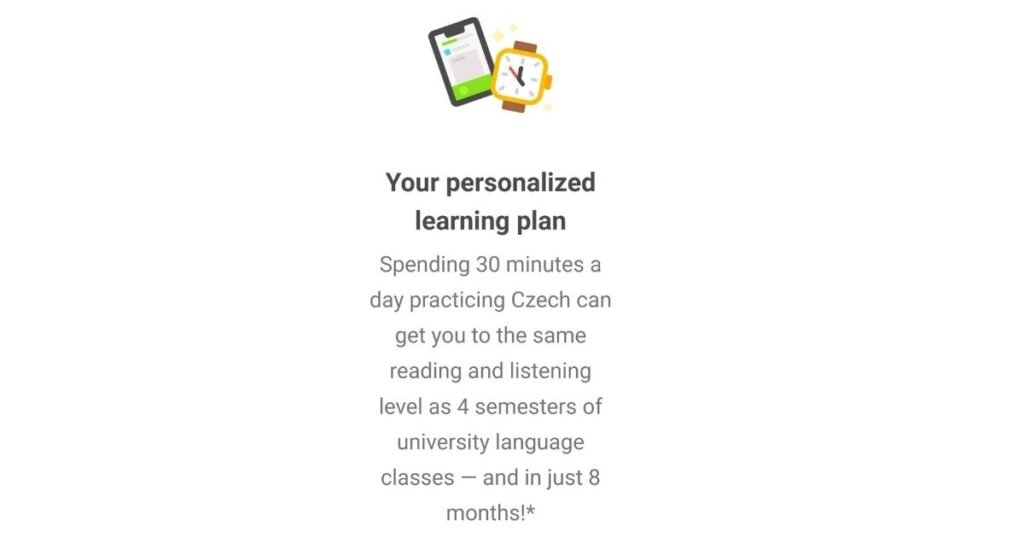
All this makes some of the Duolingo’s founder statements that much more outrageous.
“I think the reason it’s been doing so well is it’s very enjoyable – there are a lot of aspects that make it a bit like playing a game – but also effective,” he explains. “There’s an independent study that shows that if you use Duolingo for 34 hours you learn the same as you would in one university semester of language learning.“
Let me tell you what one single university semester of Spanish looked like for my colleagues and me, and you can judge by yourself whether the above claim is true:
75 hours of grammar exercises led by an expert lecturer with 20+ years of experience
30 hours of linguistic studies
30 hours of pronunciation and orthography led by an expert native speaker lecturer
30 hours of culture and civilization of Spain
20 hours of reading, vocabulary and translation exercises
That comes out to 185 hours in total, and that’s on top of the required previous knowledge of Spanish. I haven’t even included the hours spent on homework, additional reading, presentations, essays and preparing both oral and written exams because, truth be told − countless hours of hard and dedicated work go into learning a language truly well at a mastery level, no matter what Duolingo or independent studies tell you.
If this were true, there would be no need for universities or language experts anymore because we’d all be masters of a language in no time and with minimal effort. That is not the case, however.
WHAT OTHER LEARNERS SAY
To hear more experiences like mine, here is an excellent example of everything we’ve said so far in this post, from someone who tried to learn Italian as a tourist. He was diligently studying ahead of his trip, but what happened when he had to apply everything he’d learned?
I gaped like a fish. Words and phrases swam through my mind, but they didn’t add up to anything useful. Laurie switched to a restaurant scenario: “Do you have a table for four?” “I’d like two glasses of red wine.” I knew I had seen all the pieces in Duolingo’s sentences. But I was utterly unable to recall them and pull them together.
As the author of the article said, Duolingo made him ‘a master of multiple-choice Italian’ but that was it, despite 70+ hours of study. According to the study Luis von Ahn mentioned, that should equal two semesters at the University, at which point he should have been able to present in Spanish on an academic level.
It’s also interesting to see how Luis von Ahn reacted when the author confronted him about the issue. He wasn’t defensive about it, he just laughed and said that the app had done exactly what it was supposed to do: it kept him ‘hooked’, which is Duolingo’s main focus. This statement goes against Duolingo self-promotion as the ‘world´s greatest way to learn a language.’
It is simply the world’s most addictive way to play at learning a language.
You can read the full article here:
In addition, if you’re interested in learning a language that doesn’t use Latin alphabet, you might want to hear this review from someone who used Duolingo for Japanese, as Duolingo is known to be especially bad for those languages.
If Duolingo is that bad for learning a language, you might wonder:
WHY IS DUOLINGO STILL SO SUCCESSFUL?
Apart from the already mentioned addictive, competitive nature of Duolingo that keeps people hooked, hence making Duolingo thrive, there are several other reasons why Duolingo keeps growing.
a) popularity of the immersion method. There’s a lot of misinformation circling out there about what it takes to learn a language and the immersion method is definitely the most popular one.
If you’d like to learn more about why the immersion method doesn’t work for adults, you can read our in-depth article about the topic.
b) frequent upgrades. Even though the more advanced features are usually reserved for several widely-spoken languages, the fact is that Duolingo keeps introducing new language learning activities. One of them is a podcast: we wouldn’t discourage you from listening to Duolingo podcast just because it’s Duolingo, but bear in mind that even with the explanations in English, you still need previous knowledge of the language to be able to listen and understand what you’re hearing.
To learn how to effectively use listening activities in language learning, you can read our most recent article or watch our video below.
One of the most recent upgrades are the ‘Conversation Lessons’ and ‘Grammar Skills’ but yet again, they are not available for all languages and it remains yet to be seen whether that will improve the quality of learning on Duolingo.
c) smart marketing team that knows how to take a joke. As we’d seen with the example of the ‘Duolingo Evil Owl’, Duolingo’s marketing team knows how to prepare a good strategy and knows human psychology well.
***
All in all, there’s no doubt that Duolingo app has taken the language learning community by a storm.
It has done so through its elaborate gamification system, marketing strategy and tempting promises of accomplishing as much as you would at a university − by simply playing a game while commuting.
Despite its lavish success, the truth is that Duolingo not only isn’t the best way to learn a language − it’s completely ineffective for anything but some basic vocabulary that you’d be able to learn using flashcards. But − flashcards don’t give you hearts, gems and experience points.
Even with all the upgrades that Duolingo has made, it still doesn’t teach a language in a systematic and methodical way that would eventually lead to the independent use of a language − that is, fluency.
HOW TO LEARN A LANGUAGE − EFFECTIVELY
At Romance Language Centre, we believe in hard work, realistic expectations and honest feedback.
Off the back of years of study and experience, we have compiled our knowledge about what it takes to learn a language in our FREE guide How to Learn a Language: 8 rules from a polyglot that you can download here.

We also openly talk about the problems teachers and students alike come upon in the language learning world, the misinformation and the cheapening of language learning as a whole.
To hear more about it, visit our YouTube channel and join our Facebook group Learn Languages with Understanding.

